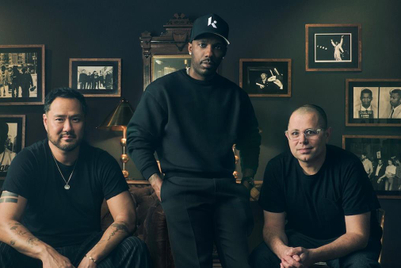.jpg&h=570&w=855&q=100&v=20250320&c=1)
15 billion hours!
That’s what I ended up staring at when I was reading a recent study on how much time Indian consumers spend while being ‘on hold’. Yes, let that sink in.
A staggering figure that translates to each individual losing more than a day annually due to slow service by brands. This inefficiency has significant economic implications, amounting to an estimated loss of $55 billion each year. Moreover, the frustration associated with these delays is driving customer behaviour, with 66% of consumers considering switching to another brand if their issues are not resolved within three working days.
And yet, we are supposedly in the middle of an AI revolution. Feels like a contradiction, right? But it is also a wake-up call to rethink how customer service should start evolving, especially in a country as vast and diverse as India.
From dumb scripts to smart conversations
We have all been there—typing or clicking ‘speak to human’ five times just to escape a bot that keeps saying, ‘I didn’t understand that’.
But today’s bots are not what they used to be. With AI, especially generative AI and natural language processing (NLP), chatbots are becoming smarter and sharper, not only in what they say but also in how they say it. They remember, they learn, and sometimes, they even understand the context.
In 2025, Axis Max Life levelled up its customer service game by upgrading its WhatsApp chatbot to support seven regional languages. They didn’t just make the bot multilingual they made it smarter.
Over 40% of users preferred speaking in their native languages, and the results spoke for themselves: Increased ROI on Click-to-WhatsApp ads and a massive jump in their lead-to-quote conversions. While it was happening, the bot did not only talk, it listened, using NPS surveys to gather feedback and close the loop on customer experience.
The Indian Railways has long offered meals during train journeys. However, the menus have largely remained unchanged for years—if not decades. Most passengers opted for them due to a lack of alternatives.
Zoop India changed the game with its smart WhatsApp chatbot. Passengers simply had to drop their 10-digit PNR, and the bot takes care of the rest—from identifying the seat to letting users choose the station, restaurant, and even track food delivery. No apps, no confusion, just hot food delivered right to your seat. It’s not just smart tech, it is thoughtful service on the move.
Why it matters for India
In a country where customer service teams are flooded with volume, where language and cultural nuances vary by city, and where access can be limited, smart bots are not the nice-to-have but must have tools.
They help brands scale without burning out teams. They offer 24x7 service without the 15-billion-hour wait. And when trained right, they bring in the kind of consistency and tone that even some human teams struggle with.
AI has come a long way, but let’s not pretend that it is flawless. Its adoption still lags. We have all had that moment, a chatbot that keeps looping, missing the point, and pushing you to the edge until you are typing ‘TALK TO A HUMAN’ like it is a mantra.
It is not that the tech is bad. It is that it is not always tuned to how we talk, think, or feel especially in a country as diverse as India.
In India, our dialects change every 100 kilometres. We code-switch between English, Hindi, and our mother tongue in the same sentence, not to forget we are using English to write in all languages. Bots? They are still learning to keep up.
Then there is the trust gap. The smarter the bots get, the more data they process and that means brands need to step up. Consent, storage, and usage—these aren’t just legal formalities. In a world where scams and data leaks are real fears, people want to know: ‘Is my data safe with this bot?’ And this is the crux of the adoption problem.
It is not about whether bots can do amazing things or not. It is about whether people believe they will without glitches, ghosting, or oversharing. The real challenge is not AI. It is how we are deploying it. Who is behind the bot? Who is training it? Who’s making the call on what it should say and how it should react?
You need humans who are equally smart, not just tech-savvy, but empathetic, strategic, and tuned into the customer journeys. While bots can be brilliant, they are only as good as the minds (and hearts) behind them.
What the future looks like
Looking ahead, it is not about bots replacing humans. It is about bots empowering humans; freeing them from repetitive work so they can focus on real relationship building.
In fact, the most forward-looking brands are not asking, ‘How do we automate everything?’ but instead, ‘How do we design a better hybrid experience?’
The best customer journeys in 2025 will likely involve both: An AI-powered bot for the first 80%, and a trained human for the final 20%—providing context, empathy, and resolution. Smart tech with human touch: That’s the sweet spot.
AI might be redefining customer service, but it is not only about smarter bots. It is also about building smarter brands that listen better, respond faster, and still feel human. No doubt, the tech will keep evolving.
But the real differentiator will be how we use it. At the end of the day, it is not AI versus humans, it is AI with humans. And the brands that get this balance right will not just solve problems quicker, they will earn trust that lasts.

— Premkumar Iyer, COO, HAWK Gozoop Group.


.jpg&h=334&w=500&q=100&v=20250320&c=1)
.jpg&h=334&w=500&q=100&v=20250320&c=1)


.jpg&h=334&w=500&q=100&v=20250320&c=1)

.jpg&h=334&w=500&q=100&v=20250320&c=1)


.jpg&h=334&w=500&q=100&v=20250320&c=1)
.jpg&h=268&w=401&q=100&v=20250320&c=1)
.jpg&h=268&w=401&q=100&v=20250320&c=1)


.png&h=268&w=401&q=100&v=20250320&c=1)

.jpg&h=268&w=401&q=100&v=20250320&c=1)

